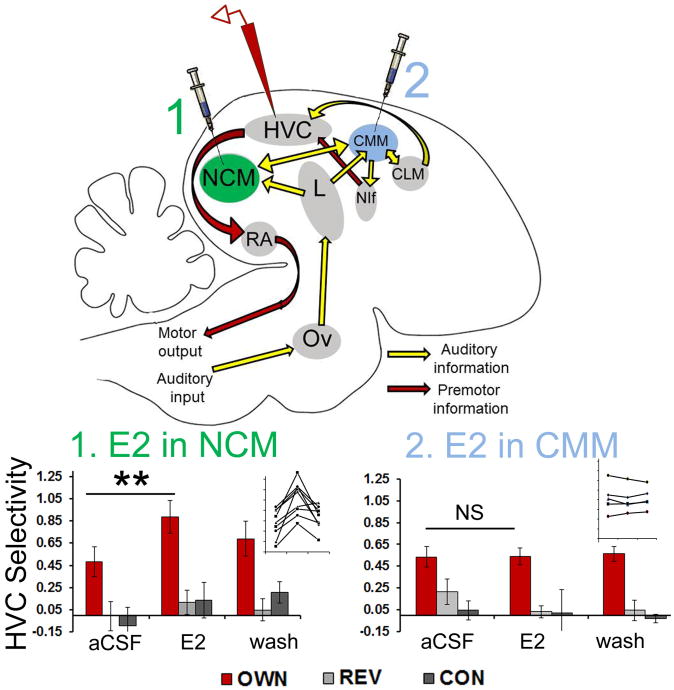Figure 1.
Rapid actions of estradiol (E2) in NCM on auditory processing and stimulus selectivity in a downstream nucleus HVC. Top, a schematic of the zebra finch brain in the sagittal plane, showing the primary auditory network (light yellow arrows) and the song motor pathway (dark red arrows). The caudomedial nidopallium (NCM) is particularly enriched with expression of aromatase, the protein that catalyzes the local synthesis of estrogens. Ov, ovoidalis; L, primary thalamorecipient Field L; HVC (proper name); CMM, caudomedial mesopallium; CLM, caudolateral mesopallium; NIf, nucleus interface; RA, robust nucleus of the arcopallium. Bottom, a selective neural representation in HVC for playback of the bird's own vocalizations (‘OWN’) is enhanced by rapid delivery of estrogens (E2) to NCM, but not to nearby CMM. Bar graphs show mean ± s.e. for HVC responses to stimulation with OWN (bird's own song), REV (reverse OWN), or CON (conspecific song), each standardized as a ratio of responses to white noise (a measure of stimulus selectivity). The HVC selectivity for OWN is significantly elevated during E2 delivery to NCM (**p < 0.01 for paired Wilcoxon test vs. aCSF) but not to CMM (NS = nonsignificant). Insets show individual data for HVC OWN selectivity during aCSF, E2, and wash manipulations in NCM (n = 9) and CMM (n = 5). Adapted from Remage-Healey and Joshi, In press, J Neurosci, (ref 72).

